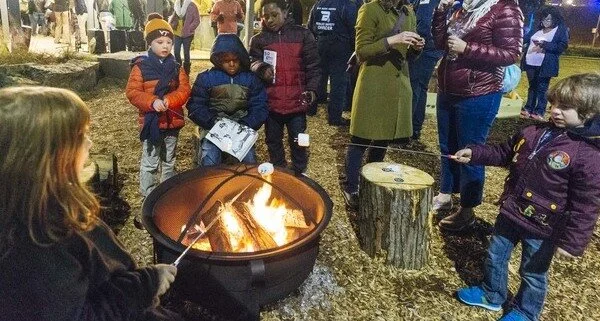The last year has forced an examination of how democracy and demagoguery show up in public space, in both the digital and physical realms. In recent days, the examination of digital platforms has put hate speech and conspiracy networks in the crosshairs, and many of the digital spaces where hate groups meet are being shut down. Yes, finally the Zellos and Parlers are being shut down (for now)…but then so is the National Mall, as well as state capitol grounds across the country. For the moment at least, the deplatforming is happening in both realms in the name of securing our democracy.
Making Digital Public Spaces Safe
Today I got my weekly fix of listening to the NPR show #OnTheMedia. There was a fascinating interview with Eli Pariser of the CivicSignals project about making digital public spaces safer and introducing the kinds of norms that govern behavior in physical public spaces. The CivicSignals project has derived principles for digital spaces from the planning and design of physical public spaces. The idea is that digital public spaces need to be reinvented so that they weave the civic fabric rather than tear it, just like public spaces in the real world are supposed to do.
I would add that across the board we need to take new measures to strengthen our civic and social infrastructure. Even if, compared to digital spaces, our public spaces are more reflective of our diversity, after a year of unequal treatment of protesters it’s clear that white hegemony brings down disproportionate force when people of color show up. And who knows what 2021 will bring, will public spaces be places where political and social causes will clash even more openly?
In both the digital and the physical world, too few public spaces welcome a diversity of audiences and don’t provide the cues, content, and governance that would build trust between the full spectrum of our society. What often happens is that a dominant group feels most at home and eventually creates an environment that feels exclusive, uncomfortable, or sometimes positively hostile to other groups.
These bubbles pervade our society, often created by our own choices – where we live, the schools we choose, our friends, and our online forums. But it is true that public spaces are where the bubbles are meant to overlap, helping us overcome those tendencies to self-segregate.
Welcoming Diversity in Public Spaces
Pariser says, “How we design these [digital] spaces has a lot to do how with how people participate in them,” and then actually cites William Whyte’s concept of triangulation as a way to build community. The example given was the firepits along the Memphis River Park, a feature that has successfully brought together people of all races and backgrounds. The firepit is the third element in the concept of triangulation that allows people to feel comfortable with each other and eventually interact with each other directly.

Creating a Sense of Welcoming with Placemaking
As someone who has spent 20+ years putting this idea into practice and working in every type of community, I can honestly say that I have often failed. Unconsciously, I have undoubtedly sometimes helped create public spaces that feel more welcoming to people who are more like me than not. But the goalpost remains – placemaking is one of the very best ways to create public spaces where the whole community can come together and feel that sense of belonging. We have to work smarter than ever and double down on building a unifying architecture of trust. Public spaces can do that, but they’re not there yet. As Langston Hughes wrote, “America never was America to me/And yet I swear this oath/America will be.”
Placemaking and development blog RSS


